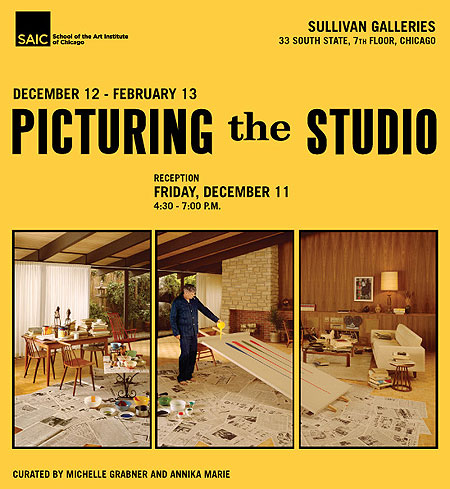Not thoughts on the exhibit of that name but the concept of "picturing the studio."
The degree to which museums fetishize the studios of "made" artists (e.g., MOMA's recreation of Pollock's meager barn) is inversely proportional to the decline of studio practice generally.
Decline not in the sense of less artists but in the attrition of a "privileged space." "Privileged" either in the romantic sense of a quasi-spiritual environment or the capitalist sense of a place where business is done, that requires payment of rent, hiring of employees, etc.
Two places where the studio could be said to have moved in the absence of the above conditions:
1. The workplace or "day job situs" (text, photoshop collages, and animations made during "downtime" and posted from work computers--not by me of course);
2. The internet - use of a blog as a publishing platform - "virtual exhibitions."
Many artists have studios that will never be visited, because they are horrible garrets or the logistics of getting artworld "players" over are just too daunting. Some of these same artists will post hundreds of reproductions of their "real space" artwork online, and even hundreds of pictures of the changing interior of their otherwise private workplace. Ironically, hundreds or even thousands more people will see their work and the environment from which it springs than if these same artists went the physical, gallery route of getting work shown. Ironically, again, though, this may be false data. Speaking from personal, anecdotal experience: I have had many people say, on making an actual studio visit, that the work was much different (meaning better) than what they assumed it was from the internet.
Other artists will cut the "virtual studio" out of the loop altogether and make art specifically for the Internet (fast-loading, punchy, linkable, transparent OR, on the other hand, opaque, net-unfriendly, and reliant on text to explain). The exhibition space then becomes the viewer's browser plus whatever cues (page design, media bells and whistles) the artist chooses to spin the work. The studio--artist sitting in a Starbucks, a cubicle, or his mom's basement surrounded by empty Cheetoh bags--will not be seen or become part of the mythology of the work.

